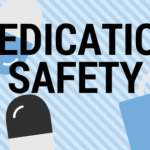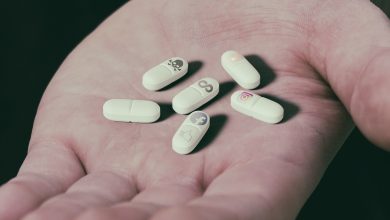Med Safety Pharmacist

Medicines are one of the most common interventions used in health care to cure and prevent diseases and mitigate symptoms. Medicines are used by the very young to the very old, in inpatient and outpatient settings, and predominantly in the home setting where patients are responsible for their own self-management (either alone or with the help of their carers and family members).
In addition to prescribed medicines, there is a wide range of symptoms and conditions that can be managed by using non-prescription medicines (including herbal and complementary medicines) without consulting any healthcare professional or, if consulted, with the advice of a community pharmacist. Although effective, medicines are often challenging to manage and use appropriately. This is due to a number of factors, such as increasingly complex pharmacotherapies, polypharmacy, aging populations with multiple diseases, and limited, or inadequately coordinated resources in healthcare systems.
Even though access to safe health care is a fundamental right of patients across the world, recent estimates by the World Health Organization (WHO) indicate that as many as one in four patients is harmed by the care received in primary and ambulatory care settings. Approximately 6% of hospitalized patients experience an adverse drug event (ADE) during their hospital stay. It is estimated that in the UK alone, there are around 237 million medication errors annually. In hospitals in the United States, over 700,000 emergency department visits and 120,000 hospitalizations result from ADEs.
Globally, the WHO has estimated that the cost associated with medication errors is USD 42 billion each year.5 Patients in low-income countries lose twice as many disability-adjusted life-years due to medication-related harm compared with those in high-income countries.
Who is a med safety pharmacist?
A medication safety pharmacist is a specialist pharmacist who provides oversight and serves as a leader in formulating policy and instituting models that promote medication safety in all aspects of the medication management process. In conjunction with designated institutional and organizational leadership, the role is responsible for coordinating all activities related to medication safety.
These activities involve system and process evaluation, recommendations and initiatives for system improvements, coordination of intervention strategies, and monitoring of activities related to medication safety. This individual is responsible for using quality assessment and performance improvement in both a proactive and review-based manner to reduce and prevent medication errors.
Role of Med Safety Pharmacists
According to the American Pharmacists Association, pharmacists in all settings have eight essential medication-related responsibilities linked to improving patient safety. These eight responsibilities and examples of how they can affect patient safety are outlined in the Table.
| Safety action | What is involved | Example of impact |
| Ensure access to medication | Evaluate the ability to pay for medication; explore alternative medications or payment means | Finding patient assistance programs or working with insurers to make the medication available that patients otherwise could not afford, improving adherence and safety |
| Supply medication information | Educate patients and caregivers on safe and effective medication use | Reviewing proper dosing with patients or providers can prevent medication errors and adverse drug interactions |
| Evaluate medication appropriateness | Assess medication appropriateness, effectiveness, and safety for each individual patient | Individual consideration of “five rights” in light of patient condition, medication list, age, weight, ethnicity, diet, allergies, and kidney and liver function can result in recommendations for changes in therapy or monitoring to increase medication safety |
| Improve medication adherence | Help patients take medication as it is prescribed | Reviewing how patients are using medications can result in suggestions for changes in medication, dosing, or additional therapies that improve patient adherence |
| Provide health and wellness services | Deliver direct health and wellness service | Blood pressure screenings can reveal poorly controlled hypertension |
| Medication management | A comprehensive review of the patient’s full medication regimen to ensure medications work well together and avoid problems (e.g., interaction) | Pharmacist review may determine which of several medications is causing an adverse effect; simplify a patient’s medication regimen; identify gaps in reaching treatment goals; or prevent prescription of medications that have adverse interactions |
| Assess health status | Determine current patient status and medication effectiveness; provide guidance regarding medication therapy | The pharmacist may detect dangerously low or high blood pressure and recommend changes in medication therapy and thereby preventing harm |
| Coordinating care transitions | Coordinate medication management across care transitions; assist with care coordination for transitions | Pharmacist-led medication reconciliation may identify potential interactions or omissions from the medication list at transitions in care, which are prone to error. |
20 Characteristics Of A Medication Safety Leader
The characteristics of a medication safety pharmacist include
1. A strong understanding of the facility’s internal systems and processes developed through firsthand experience, observations, medication-use evaluations, interviews, and data analysis for the spectrum of patient populations treated in their organization (e.g., pediatric, geriatric, cardiac, oncology).
2. Clinical expertise and a broad understanding of health care systems and processes to facilitate accurate interpretation of clinical events.
3. Knowledge of and experience with all aspects of the medication-use system, including procurement, prescribing, transcribing, preparation, distribution, administration, documentation, and monitoring.
4. Strong analytical skills and an understanding of statistics, population data, and the concepts of risk and prioritization.
5. Knowledge of performance-improvement methodology and tools, including root cause analysis (RCA), failure mode and effects analysis (FMEA), cause-and effect diagramming, process-flow mapping, and methods for monitoring projects and measuring the progress of performance-improvement initiatives.
6. Post-graduate specialized training (e.g., medication safety residency or fellowship) or three or more years of health-system practice experience.
7. Demonstrated leadership skills.
8. Excellent small- and large-group presentation skills.
9. Excellent oral communication skills, especially the ability to communicate to all types of health care providers as individuals as well as in small and large groups.
10. Excellent writing and editing skills.
11. Strong personal belief that resolving the problem of medication errors is a systems issue and not an individual health care provider issue.
12. Ability to function proactively rather than reactively.
13. Strong personal belief in the concept of a “just culture”7 that enhances transparency, opens participation to all health care professionals, and fosters a “lessons learned” environment in an organization’s medication error reporting system.
14. Understanding of concepts and application of safety principles, continuous quality improvement, and human factors engineering.
15. Appropriate assertiveness.
16. A passion for medication safety and improving patient outcomes.
17. Proven success in working with interdisciplinary teams and engaging diverse groups.
18. Strong personal belief in engaging patients as part of the health care team.
19. Eagerness to learn from events outside one’s own facility (e.g., through external sources of information) to apply learning about what went wrong in order to identify and remedy possible system weaknesses to prevent patient harm.





